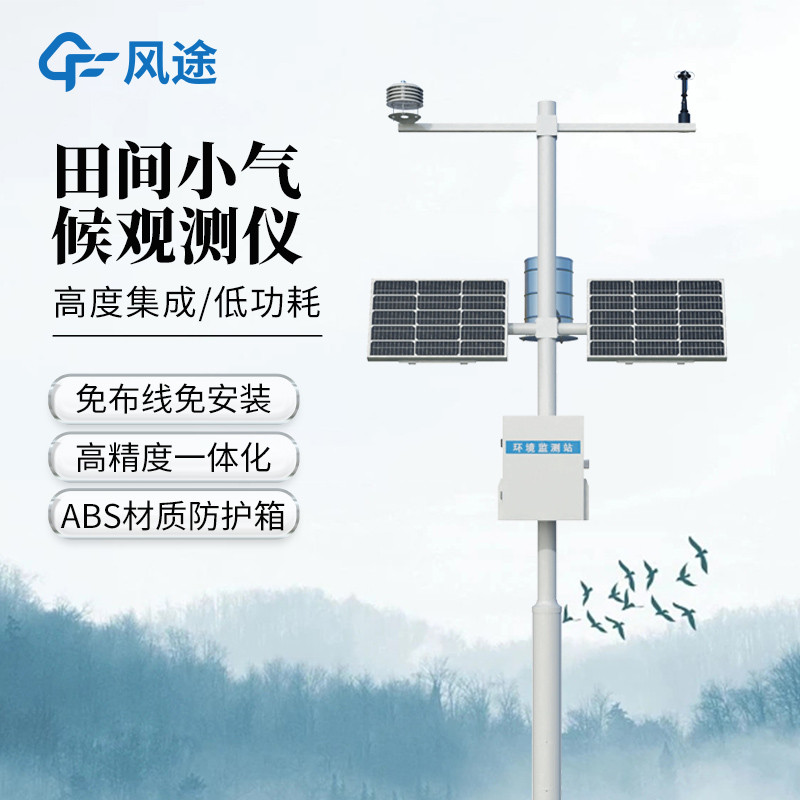Tianyi Sensor IOT Technology Co., Ltd
Sales Manager:Ms. Emily Wang
Cel,Whatsapp,Wechat:+86 15898932201
Email:info@fengtutec.com
Add:No. 155 Optoelectronic Industry Accelerator, Gaoxin District, Weifang, Shandong, China

Sales Manager:Ms. Emily Wang
Cel,Whatsapp,Wechat:+86 15898932201
Email:info@fengtutec.com
Add:No. 155 Optoelectronic Industry Accelerator, Gaoxin District, Weifang, Shandong, China
time:2025-05-27 09:20:37 source:Weather Station viewed:184 time
Agricultural meteorological disasters pose enormous threats to agricultural production. During droughts, prolonged water shortage causes soil to dry out, stunting or even killing crops. In severe cases, large-scale crop failures or even total harvest losses occur, with scenes of cracked land and no grain harvested being all too common. When floods hit, excessive rainfall or snowmelt leads to rising water levels that submerge farmland, not only damaging farmland infrastructure but also hindering crop growth and often causing significant yield reductions. Under low-temperature conditions, frost forms as water vapor in the air condenses into ice, directly damaging crop tissues and impeding their growth and development. In severe cases, it can kill crops, and many tender crop seedlings often cannot survive frost strikes.
Reasonable application of the Agricultural Environment Monitoring System helps mitigate these meteorological disasters. Composed of meteorological sensors, data loggers, and computer meteorological software, it can comprehensively monitor various meteorological elements such as wind direction, wind speed, temperature, humidity, air pressure, and rainfall, as well as soil information like soil temperature and moisture.
For instance, in the face of drought, monitoring stations continuously track data on air humidity and soil moisture. As soon as the data indicates that soil moisture is approaching levels unsuitable for crop growth, the system issues immediate warnings. Farmers can then promptly replenish water through irrigation and other measures based on these warnings to meet the water needs of crops. In some drought-prone regions, relying on the monitoring station's warnings, farmers can precisely time irrigation to avoid crop water stress.
During floods, monitoring stations closely monitor rainfall and water level changes. When excessive rainfall persists or water levels rise rapidly, flood warnings are issued in a timely manner. Farmers can take pre-emptive measures such as dredging drainage channels in advance to reduce the damage of floods to farmland. In rainy regions, farmland can leverage the monitoring station's warnings to clear drainage systems before rainstorms, minimizing waterlogging time and reducing crop losses from flooding.
In frost prevention, monitoring stations continuously monitor temperature changes. When nighttime temperatures approach the critical freezing point for crops, warning messages are instantly sent out. Upon receiving the warnings, farmers can adopt measures like smoking or covering to raise local temperatures and protect crops from frost damage. In orchards, for example, fruit growers can cover fruit trees with protective materials before frost arrives based on the monitoring station's warnings, effectively reducing fruit damage.

Traditional meteorological monitoring stations are relatively fixed in distribution, making it difficult to comprehensively cover complex terrains and vast areas. There are also certain limitations in the timeliness of data. Mobile meteorological monitoring can flexibly penetrate different regions t...
An ultrasonic weather station is a highly integrated meteorological monitoring device that utilizes modern ultrasonic detection technology. It emits ultrasonic waves and measures changes in their propagation speed through the air to accurately calculate wind speed and direction, completely eliminati...
The FT-SQ6 electronic weather station is a professional meteorological measurement tool that integrates portability, accuracy, and durability, and it is also a reliable piece of equipment in the field of special firefighting. Its compact design and lightweight body make portability its main advantag...
The standout advantage of the Portable Weather Station is its "portability," a feature directly reflected in its name. Compared with traditional fixed meteorological monitoring equipment, it has a significantly smaller size and lighter weight, with its overall design fully considering the...